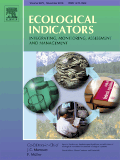Ver ítem
- xmlui.general.dspace_homeCentros Regionales y EEAsCentro Regional Entre RíosEEA ParanáArtículos científicosxmlui.ArtifactBrowser.ItemViewer.trail
- Inicio
- Centros Regionales y EEAs
- Centro Regional Entre Ríos
- EEA Paraná
- Artículos científicos
- Ver ítem
Water Footprint in paddy rice systems. Its determination in theprovinces of Santa Fe and Entre Ríos, Argentina
Resumen
In the context of social responsibility and, of the directives aimed at an integral management of natural resources, the Water Footprint (WF) has been widely spread as an indicator that contributes to a safe and sustainable use of water. The purpose of this study was to determine the WF for rice production (WFR) in two rice-growing areas in Argentina: central-east Entre Ríos and Santa Fe. The calculation was made using the methodology proposed in The
[ver mas...]
In the context of social responsibility and, of the directives aimed at an integral management of natural resources, the Water Footprint (WF) has been widely spread as an indicator that contributes to a safe and sustainable use of water. The purpose of this study was to determine the WF for rice production (WFR) in two rice-growing areas in Argentina: central-east Entre Ríos and Santa Fe. The calculation was made using the methodology proposed in The Water Footprint Assessment Manual, according to which the WF of a crop, in this case rice, represents the relation between the amount of water satisfying the evapotranspiration demand (CWU) and the field productivity. The WF has three components: green (WFgreen), associated with rain used by the crop (CWUgreen); blue (WFblue), related to underground or surface water that fulfils the evapotranspiration demand (CWUblue); and grey (WFgrey), related to the volume of water required to dilute the residues of pollutants generated from the crop production. To estimate the CWUblue and CWUgreen, a rice water balance model (RWM), specifically developed for continuous flooding irrigation, was applied. Based on daily data of precipitation, crop evapotranspiration and soil variables the model allows calculating gross irrigation depth, surface runoff due to precipitations, variation of water stored in the soil, and deep percolation. Four agricultural seasons were assessed: 2009/2010, 2010/2011, 2011/2012, and 2012/2013. In Entre Ríos, WF was 987 m3 ton−1 (44% WFgreen and 56% WFblue), whereas in Santa Fe it was 846 m3 ton−1 (36% WFgreen and 64% WFblue). In accordance with related work in the region, WFgrey was not considered. Although only CWU is part of the WF calculation, the other components of the water balance are necessary for rice production. The RWM model determined the consumptive use of the crop and distinguished blue water from green water, besides calculating the other parameters of the water balance. This made possible to show the inefficiencies in the system since precipitations are not fully used. The WFR, together with these components, is useful to make comparisons between different regions and it is a tool to promote water saving, provided that it is complemented with specific policies, such as the differential application of irrigation taxes or electric power rates.
[Cerrar]

Autor
Marano, Roberto Paulo;
Filippi, Rocio;
Fuente
Ecological indicators 56 : 229-236. (September 2015)
Fecha
2015-09
Editorial
Elsevier
ISSN
1470-160X
Formato
pdf
Tipo de documento
artículo
Palabras Claves
Derechos de acceso
Restringido
 Excepto donde se diga explicitamente, este item se publica bajo la siguiente descripción: Creative Commons Attribution-NonCommercial-ShareAlike 2.5 Unported (CC BY-NC-SA 2.5)
Excepto donde se diga explicitamente, este item se publica bajo la siguiente descripción: Creative Commons Attribution-NonCommercial-ShareAlike 2.5 Unported (CC BY-NC-SA 2.5)

